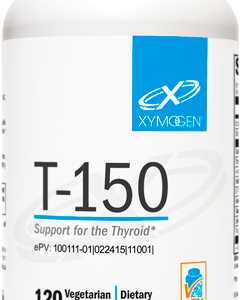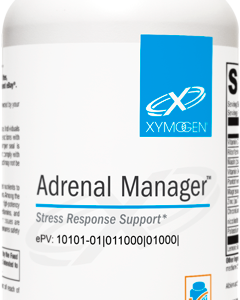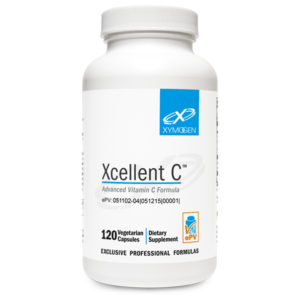Scientific Information/Data
Individuals with hypersensitive immune reactions often experience physical, mental, and functional decline even with moderate onset of discomfort.[1] AllerDHQ™ provides fast-acting, natural support for hypersensitivity reactions, including watery, itchy eyes and runny nose, as well as other manifestations of histamine release. Formulated with a synergistic combination of vitamins, bioflavonoids, amino acids, herbs, and bromelain, AllerDHQ™ addresses the distressing signs of immune hypersensitivity.*
Vitamin C (ascorbic acid) Vitamin C is essential to humans and must be obtained exogenously. While most mammals are able to synthesize ascorbic acid, humans lack one of the enzymes required for this process and can quickly become deficient if dietary or supplemental intake is inadequate. Stress, smoking, pollution, and temperature changes increase our requirement for vitamin C. Well-known functions of vitamin C include antioxidant protection from damaging free radicals and the synthesis of collagen, carnitine, and neurotransmitters. Vitamin C also plays a lesser-known role in the deactivation of histamine.*[2,3]
Bioflavonoids Quercetin, dihydroquercetin (DHQ), and rutin are active bioflavonoids incorporated into AllerDHQ™ for their role in moderating an exaggerated immune response. Bioflavonoids work synergistically with other antioxidants to protect tissues from the negative effects of oxidation and inflammation often observed during hyperimmune reactions.[4] Immune-moderating effects include inhibition of mast-cell degranulation and prevention of histamine release during hypersensitive episodes.*[1,5,6]
Dihydroquercetin DHQ supports the activities of other antioxidants, protects erythrocytes and capillaries, supports bronchial function, and assists in chelation of metals.[7] DHQ was also found to moderate pro-inflammatory pathways by inhibiting inducible ICAM-1 expression. [8] The FlavitPURETM† form of DHQ in AllerDHQ™ is a bioactive, natural form that is significantly more absorbable than quercetin alone. The inclusion of FlavitPURE in AllerDHQ™ creates a clear advantage over products containing only quercetin, as fewer capsules are required for effective results. This specific form of DHQ boasts an impressive ORAChydro value of 28,000+ μM TE/g and a CAP-e assay of 9.9-10.5 units per gram,[7,9] indicative of effective antioxidant protection within the cell. ORAChydro reflects oxygen radical absorbance capacity for water-soluble antioxidants, and CAP-e refers to cell-based antioxidant protection in erythrocytes.*
Rutin A source of naturally occurring flavonoids, rutin reduces capillary permeability and edema, which can reduce mucus fluid buildup or “runny nose.”[10] Rutin’s protective effect against oxidation is amplified by ascorbic acid, also present in AllerDHQ™.*[4]
N-Acetyl-Cysteine NAC is the acetylated form of the conditionally essential amino acid L-cysteine. As a precursor to the “master antioxidant” glutathione, NAC plays a significant role in detoxification and antioxidant protection. NAC also functions as a natural mucolytic, reducing the viscosity of mucus commonly produced during a hyperimmune response.*[11,12]
Stinging Nettle Extract (Urtica dioica) Stinging nettle leaf has been found to regulate a variety of inflammatory activities associated with hyperimmune response, including mast-cell degranulation, prostaglandin formation, and histamine action.*[13-15]
Bromelain Bromelain refers to an enzyme complex extracted from the stem and fruit of the pineapple plant (Ananas comosus). Its modulation of the inflammatory response is thought to exert a beneficial effect in combating hypersensitive immune reactions, earning it approved status by the German Commission E for “micro-inflammations” and related discomforts.[15,16] Early studies identified its positive effects on controlling edema, tissue permeability, and vasodilation.[17] Bromelain is also found to enhance the absorption of quercetin.*[18]
Research indicates that the natural components in AllerDHQ™, including vitamin C, bioflavonoids, DHQ, NAC, and bromelain, work synergistically to moderate unpleasant immune reactions.*[1,4]
References
- Thornhill SM, Kelly AM. Natural treatment of perennial allergic rhinitis. Altern Med Rev. 2000 Oct;5(5):448-54. [PMID: 11056414]
- Johnston CS. The antihistamine action of ascorbic acid. Subcell Biochem. 1996;25:189-213. [PMID: 8821975]
- Strohle A, Wolters M, Hahn A. Micronutrients at the interface between inflammation and infection—ascorbic acid and calciferol: part 1, general overview with a focus on ascorbic acid. Inflamm Allergy Drug Targets. 2011 Feb;10(1):54-63. [PMID: 21184650]
- Skaper SD, Fabris M, Ferrari V, et al. Quercetin protects cutaneous tissue-associated cell types including sensory neurons from oxidative stress induced by glutathione depletion: cooperative effects of ascorbic acid. Free Radic Biol Med. 1997;22(4):669-78. [PMID: 9013129]
- Middleton E Jr, Drzewiecki G, Krishnarao D. Quercetin: an inhibitor of antigen-induced human basophil histamine release. J Immunol. 1981 Aug;127(2):546-50. [PMID: 6166675]
- Park HH, Lee S, Son HY, et al. Flavonoids inhibit histamine release and expression of proinflammatory cytokines in mast cells. Arch Pharm Res. 2008 Oct;31(10):1303-11. [PMID: 18958421]
- http://www.vitalavita.us Accessed July 31, 2011.
- Bito T, Roy S, Sen CK, et al. Flavonoids differentially regulate IFN gamma-induced ICAM-1 expression in human keratinocytes: molecular mechanisms of action. FEBS Lett. 2002 Jun 5;520(1-3):145-52. [PMID: 12044887]
- Ou B, Hampsch-Woodill M, Prior RL. Development and validation of an improved oxygen radical absorbance capacity assay using fluorescein as the fluorescent probe. J Agric Food Chem. 2001 Oct;49(10):4619-26. [PMID: 11599998]
- Turner RB, Fowler SL, Berg K. Treatment of the common cold with troxerutin. APMIS. 2004 Sep;112(9):605-11. [PMID: 15601310]
- Kelly GS. Clinical applications of N-acetylcysteine. Altern Med Rev. 1998 Apr;3(2):114-27. [PMID: 9577247]
- Ziment I. Acetylcysteine: a drug that is much more than a mucokinetic. Biomed Pharmacother. 1988;42(8):513-9. [PMID: 3066412]
- Roschek B Jr, Fink RC, McMichael M, Alberte RS. Nettle extract (Urtica dioica) affects key receptors and enzymes associated with allergic rhinitis. Phytother Res. 2009 Jul;23(7):920-6. [PMID: 19140159]
- Riehemann K, Behnke B, Schulze-Osthoff K. Plant extracts from stinging nettle (Urtica dioica), an antirheumatic remedy, inhibit the proinflammatory transcription factor NF-kappaB. FEBS Lett. 1999 Jan 8;442(1):89-94. [PMID: 9923611]
- Blumenthal M. The Complete German Commission E Monographs: Therapeutic Guide to Herbal Medicines. Austin, TX: American Botanical Council; 2000.
- Maurer HR. Bromelain: biochemistry, pharmacology and medical use. Cell Mol Life Sci. 2001 Aug;58(9):1234-45. [PMID: 11577981]
- Ryan RE. A double-blind clinical evaluation of bromelains in the treatment of acute sinusitis. Headache. 1967 Apr;7(1):13-7. [PMID: 4859824]
- Lakhanpal, P, Rai DK. Quercetin: A Versatile Flavonoid. IJMU. 2007 Jul-Dec;2(2):22-37.







